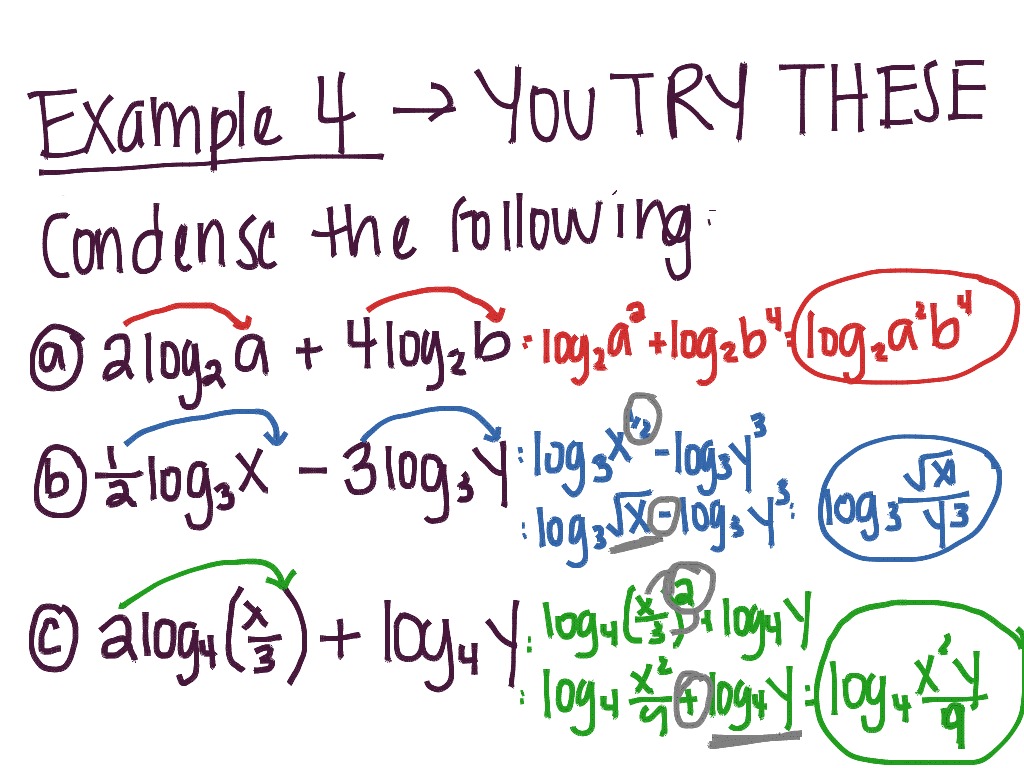

They are always applied under certain rules and regulations.įollowing rules needed to be remembered while playing with logarithms: Logarithms are a very disciplined field of mathematics. log 2 4x – log 2 x = log 2 (4x/x) = log 2 4.Subtraction of two logarithms A and B is equal to dividing the logarithms. log 4x + log x = log (4x * x) = log 4x 2.

The first law of logarithms state that the sum of two logarithms is equal to the product of the logarithms.

The four basic laws of logarithms include: These laws can be applied on any base, but during a calculation, the same base is used. The logarithmic expressions can be written in different ways but under certain laws called laws of logarithms. Changing logarithmic functions to exponential form.We can use laws and rules of logarithms to perform the following operations: However, the same base must be used throughout a calculation. It is important to note that the laws and rules of logarithms apply to logarithms of any base. Like exponents, logarithms have rules and laws that work the same way as the rules of exponents. In calculus, the logarithm is used to differentiate complex problems and determine the area under curves.A logarithm is used to calculate the payment period of a loan.Exponential processes such as the decay of ratio active isotopes, growth of bacteria, the spread of an epidemic in a population, and cooling of a dead body are analyzed using logarithms.The level of noise is measured in dB (decibels) on a logarithmic scale.Measurement of earthquake intensity is performed on the Richter scale using logarithms.We use logarithms to measure the acidity and alkalinity of chemical solutions.Let’s see some of these applications of logarithms: For instance, log a b = n can be represented exponentially as a n = b.Īlthough logarithms are taught in schools to simplify computation involving large numbers, they still have a significant role in our daily lives. Similarly, we can define the logarithm of a number as the inverse of its exponents. We can represent this statement symbolically as To start with, the logarithm of a number ‘b’ can be defined as the power or exponent to which another number ‘a’ must be raised to produce the result equal to the number b. What is a logarithm? Why do we study them? And what are their rules and laws?


 0 kommentar(er)
0 kommentar(er)
